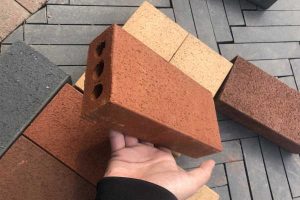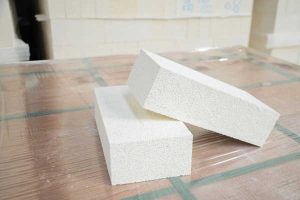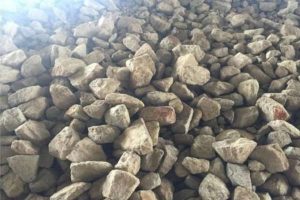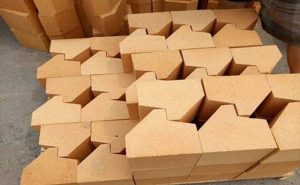Clay bricks, also known as sintered bricks, are man-made small blocks for construction. Clay bricks are made of clay (including shalec, oal gangue, and other powder) as the main raw material, treated with clay, formita, dried, and roasted, and are available in solid and hollow forms.
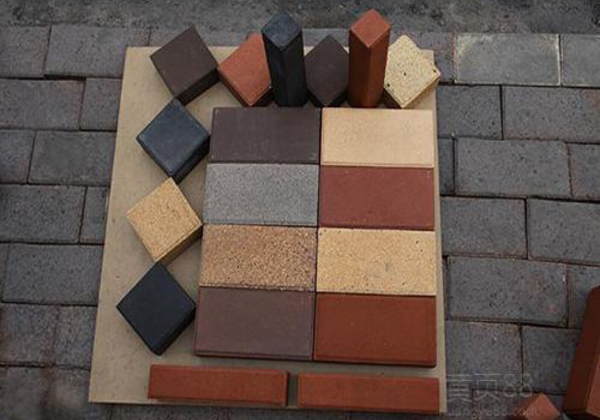
1. The Main Uses of Clay Bricks
1.1 Common and superior clay bricks are mainly used in the metallurgical industry to produce shaped refractory materials.
Various specifications of bricks and unshaped refractory materials, the number of raw materials, accounting for about 70% of all refractory materials. Refractory clay in the hard clay used to make blast furnace refractory materials, iron furnace, varma altforno, steel barrel lining bricks, plug head bricks, high alumina clay used to make electric furnaces, blast furnaces with aluminum bricks, high alumina lining bricks and high alumina refractory clay, hard clay, and high alumina clay often in high temperature (1400-1800 ℃) calcined and matured material used.
1.2 Refractory clay in the grinding industry, chemical industry, and ceramic industry also has important uses, high alumina clay after in the electric arc furnace.
The high alumina clay is melted in the electric arc furnace to manufacture abrasive materials, of which electrofused corundum abrasive is the most widely used abrasive, accounting for 2/3 of all abrasive products, high alumina clay can be used to produce various aluminum compounds. Such as aluminum sulfate, aluminum hydroxide, aluminum chloride, potassium aluminum sulfate, and other chemical products. In the ceramic industry, hard clay and semi-hard clay can be used as raw materials for the manufacture of daily ceramics, architectural porcelain, and industrial porcelain.
1.3 Refractory clay in the building materials industry for the production of cement kilns and glass kilns
High alumina bricks, phosphate high alumina refractory bricks, high alumina fusion casting bricks, high alumina clay after calcination, and then mixed with limestone made of aluminum-containing cement, this cement can quickly set and corrosion resistance and heat resistance characteristics.
The advantages of clay brick:
- Clay brick at high temperatures is weakly acidic, and resistance to alkaline slag erosion ability is slightly poor, but with the al2o3 content increased and enhanced, thermal stability than silica brick, magnesium brick for good.
- Qualified quality blast furnace clay brick by drying treatment vacuum phosphoric acid impregnation, the second low temperature firing into the phosphoric acid impregnated products, can be used for masonry blast furnace upper furnace lining.
- Clay brick local materials, cheap, durable, fire, and heat insulation. Durable, fire, heat insulation, sound insulation, moisture absorption, and other advantages, widely used in civil engineering, waste bricks can also be used as aggregate for concrete.
China’s solid and hollow clay brick al2o3 content is generally more than 40%, and fe2o3 content is less than 2.0 ~ 2.5%. The clinker in the material is 65~85%, and the bonded clay is 35~15%. The crushed bonded clay and finely ground clinker are mixed and ground, and then prepared with granular clinker to form a semi-dry clay, altprema muldado, and fired at about 1400℃, which has better performance. Clay bricks are weakly acidic at high temperatures and slightly less resistant to alkaline slag erosion but enhance with higher al2o3 content. Thermal stability is better than silica brick, magnesium brick (see magnesia brick), ktp.
Refractory brick products. We use advanced production technology and high-quality raw materials to ensure our products are of the highest quality and meet the needs of our customers. With a commitment to customer satisfaction and quality, PER refractories are the go-to supplier for all your refractory brick needs.
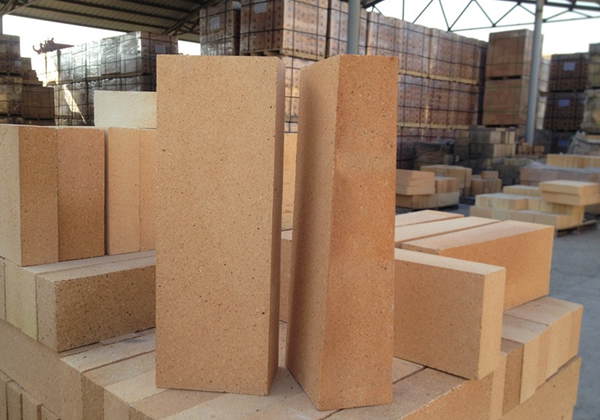
2. How Can We Improve The Quality Of Clay Bricks?
First of all, from the source gatekeeper, tio estas, the raw material off, can not use raw materials and short firing time of raw materials, because the use of short calcination time of raw materials, will appear calcium point.
And the inherent quality of the affected phenomenon. Clay brick with low aluminum content, raw materials in the impurities, the purchase of raw materials should be allowed to calcify
In this way, the inner quality of the clay bricks produced can be guaranteed.
Clay brick sintering temperature and the quality of clay bricks have a great relationship if the sintering temperature is low iron content can not be fully sintered reaction will reduce the refractoriness of clay bricks, and the clay brick surface will have holes.
The sintering of clay bricks depends on the dispersion of the clay and the number of fusible materials, difficult to sinter the clay can not be made into high strength and low porosity
The brick of the brick. The choice of raw materials should be selected as the raw material of clay brick with fewer impurities, and the refractoriness should not be lower than 1690℃; the firing temperature of clay clinker is better than the firing temperature of clay brick so that the clay can reach complete sintering. Under-fired clinker also can not be used, it will shrink greatly during the firing process, causing clay brick cracks and strength decline.
The particle composition of the raw material in the clay brick composition has a great relationship to the strength and density of the clay brick. Raw material particles should be in line with the principle of large at both ends, small in the middle, and large, medium, and small particles with a reasonable proportion, to improve the quality of clay bricks. Clay brick particles in the crushing, must ensure that the granule formula is. The particle distribution is reasonable, and the mixing time cannot be too short. Only particle gradation reasonable, less raw material impurities, mixing time of 12 minutes or more, the production of clay bricks will be neat edges and corners, and the surface is smooth; at the same time, the intrinsic quality of compressive strength and load softening temperature can be guaranteed.
Clay brick to improve product quality, from the source of raw materials is very important, but high-pressure molding is also key. High-pressure molding of clay bricks has high density and high strength. The external moisture of the high-pressure formed bricks evaporates quickly, and before entering the tunnel kiln.
Before entering the tunnel kiln, it is baked out of crystallized water by the dryer and fired at high temperatures for more than three days, so that the indicators of clay bricks are guaranteed.
Clay brick firing is the last process of producing clay bricks, kiln car code brick to leave a reasonable fire channel, bad and billet, column and column to leave a proper gap, clay brick semi-finished products to be within the kiln wall should be kept at a distance, in the kiln to adjust the fire flow into the oxidation atmosphere sintering. Because the oxidation atmosphere fires out of the clay brick, uniform color. The load-softening temperature of clay bricks can only be guaranteed.
To improve the quality of clay bricks, we have to do a series of details from raw material purchase, to crushing, muldado, and firing to ensure the quality of clay bricks.

